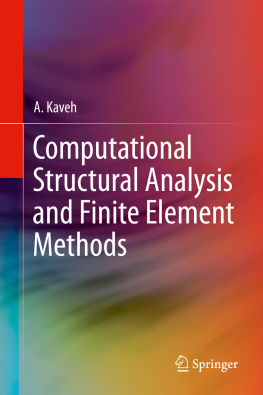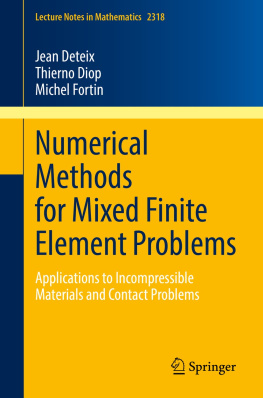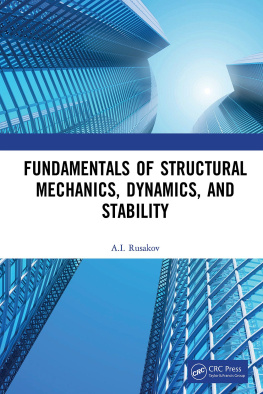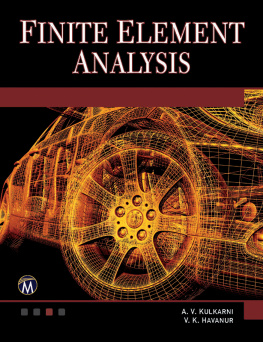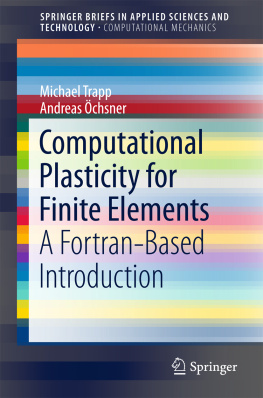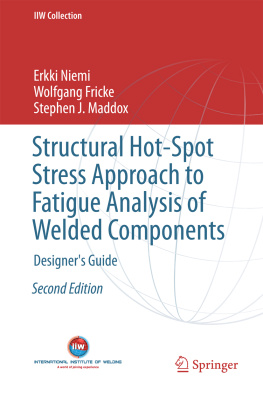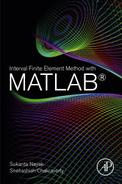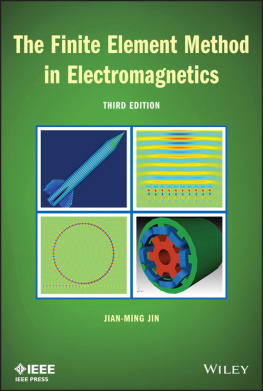Kaveh - Computational Structural Analysis and Finite Element Methods
Here you can read online Kaveh - Computational Structural Analysis and Finite Element Methods full text of the book (entire story) in english for free. Download pdf and epub, get meaning, cover and reviews about this ebook. City: Cham, year: 2016, publisher: Springer International Publishing, genre: Children. Description of the work, (preface) as well as reviews are available. Best literature library LitArk.com created for fans of good reading and offers a wide selection of genres:
Romance novel
Science fiction
Adventure
Detective
Science
History
Home and family
Prose
Art
Politics
Computer
Non-fiction
Religion
Business
Children
Humor
Choose a favorite category and find really read worthwhile books. Enjoy immersion in the world of imagination, feel the emotions of the characters or learn something new for yourself, make an fascinating discovery.
Computational Structural Analysis and Finite Element Methods: summary, description and annotation
We offer to read an annotation, description, summary or preface (depends on what the author of the book "Computational Structural Analysis and Finite Element Methods" wrote himself). If you haven't found the necessary information about the book — write in the comments, we will try to find it.
Kaveh: author's other books
Who wrote Computational Structural Analysis and Finite Element Methods? Find out the surname, the name of the author of the book and a list of all author's works by series.
Computational Structural Analysis and Finite Element Methods — read online for free the complete book (whole text) full work
Below is the text of the book, divided by pages. System saving the place of the last page read, allows you to conveniently read the book "Computational Structural Analysis and Finite Element Methods" online for free, without having to search again every time where you left off. Put a bookmark, and you can go to the page where you finished reading at any time.
Font size:
Interval:
Bookmark:



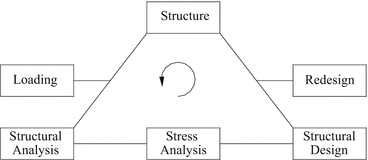
- Static versus dynamic;
- Planar versus space;
- Linear versus non-linear;
- Skeletal versus continua;
- Statically determinate versus statically indeterminate.
- Force method : In this method, some of the internal forces and/or reactions are taken as primary unknowns, called redundants. Then the stressstrain relationship is used to express the deformations of the members in terms of external and redundant forces. Finally, by applying the compatibility conditions that the deformed members must fit together, a set of linear equations yield the values of the redundant forces. The stress resultants in the members are then calculated and the displacements at the nodes in the direction of external forces are found. This method is also known as the flexibility method and compatibility approach .
- Displacement method : In this method, the displacements of the nodes necessary to describe the deformed state of the structure are taken as unknowns. The deformations of the members are then calculated in terms of these displacements, and by use of the stressstrain relationship, the internal forces are related to them. Finally, by applying the equilibrium equations at each node, a set of linear equations is obtained, the solution of which results in the unknown nodal displacements. This method is also known as the stiffness method and equilibrium approach .
Font size:
Interval:
Bookmark:
Similar books «Computational Structural Analysis and Finite Element Methods»
Look at similar books to Computational Structural Analysis and Finite Element Methods. We have selected literature similar in name and meaning in the hope of providing readers with more options to find new, interesting, not yet read works.
Discussion, reviews of the book Computational Structural Analysis and Finite Element Methods and just readers' own opinions. Leave your comments, write what you think about the work, its meaning or the main characters. Specify what exactly you liked and what you didn't like, and why you think so.

